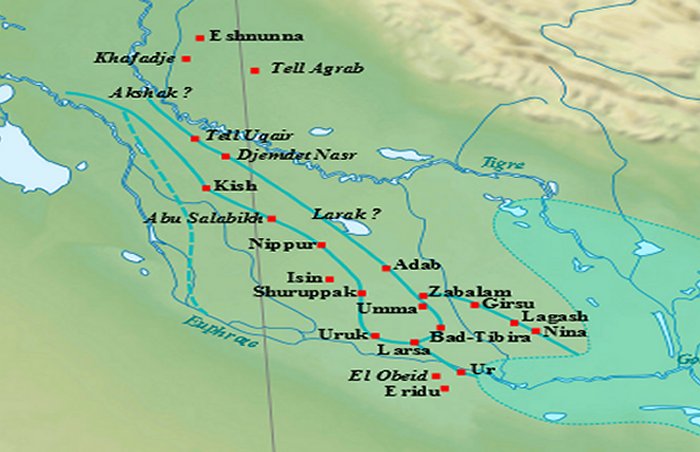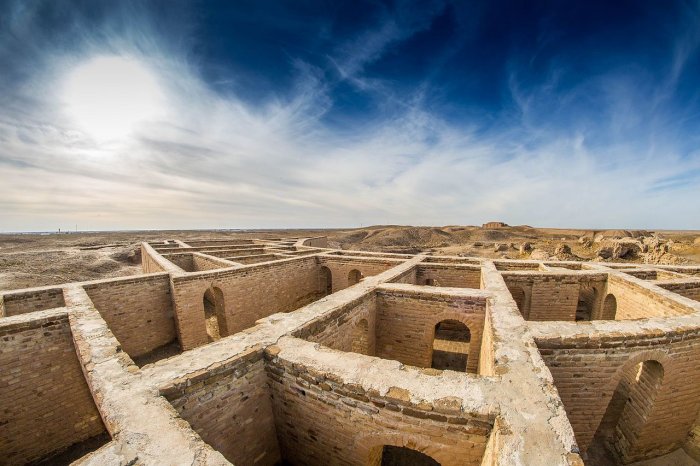Ur – One Of The Largest And Most Important Cities Of Ancient Mesopotamia
A. Sutherland - AncientPages.com - Today, all we know about the ancient city of Ur comes from the written documents unearthed at Ur. The people of Mesopotamia, which Ur was part of, used the cuneiform system written on clay tablets, often broken and unreadable. Scholars have worked hard to decipher them.
Map of the main cities of Lower Mesopotamia during the Early Dynastic period, with the approximate course of the rivers and the ancient shoreline of the Gulf. Image credit: Zunkir - CC BY-SA 3.0
This historical material is undoubtedly the essential source of our knowledge about Ur. The city's monuments have not survived until today, mainly because of the test of time. Built of mud brick - not as resilient building material as stone, widely used in ancient Egypt – the Sumerian structures could not survive.
The city of Ur was once a large, wealthy, busy, and prosperous port located close to the mouth of the Euphrates River on the Persian Gulf, and much of Sumerian history is linked to this city.
The geographical location of Ur (now Tell el-Muqayyar, Iraq) in the vicinity of the river and the sea contributed to the city's dominant role in foreign trade, using ancient Dilmun as a transit harbor.
Prophet Abraham Traveled To The West From Ur
The Bible mentions this city as Ur of the Chaldeans, where Prophet Abraham was born, and from there, he traveled to the west around 2000 BC.
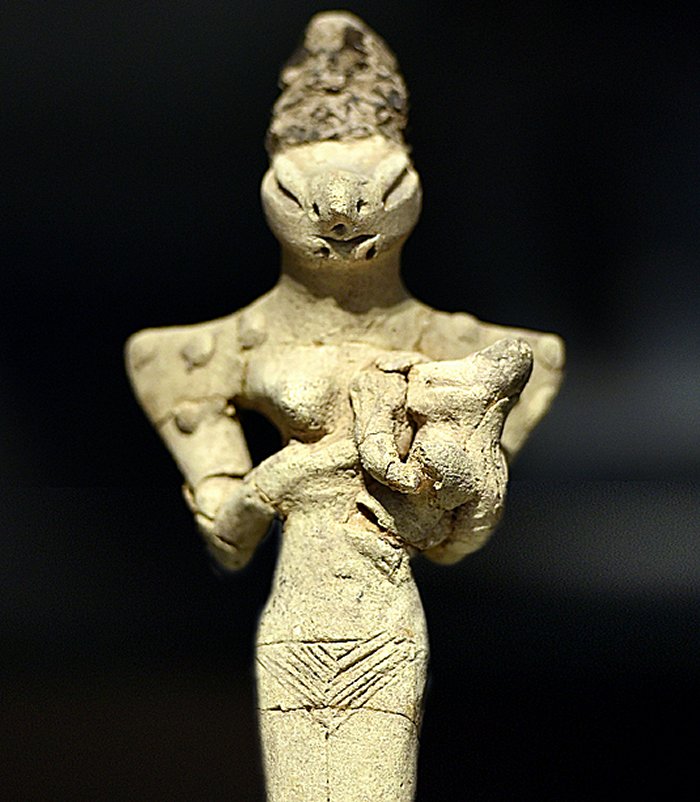 Lizard-headed nude woman nursing a child, from Ur, Ubaid period, 4500-4000 BCE; Iraq Museum. Image credit: Osama Shukir Muhammed Amin FRCP(Glasg) - CC BY-SA 4.0
Lizard-headed nude woman nursing a child, from Ur, Ubaid period, 4500-4000 BCE; Iraq Museum. Image credit: Osama Shukir Muhammed Amin FRCP(Glasg) - CC BY-SA 4.0
Then the LORD told him, "I am the LORD who brought you out of Ur of the Chaldeans to give you this land as your possession." (Genesis 15:7)
Ur is among the first Sumerian city-states, and the largest of them were Ur, Uruk, Lagash, Kish, and Nippur, but the first, as Sumerian tradition has it, was Eridu.
As for Ur, the city was agricultural and started modestly, with hunters and fishermen. Historically, Ur was first mentioned in records dated back to the 26th century BC. Based on the Sumerian King's List, Mesannepada (or Mesh-Ane-Pada) was the first ruler of the First Dynasty of Ur, confirmed by inscriptions and insignia of several kings never mentioned in the King's List.
Other documents, unearthed in the royal cemetery of Ur confirm Mesannepada as one of these kings.
Little is known about the city during the period of the First and Second Dynasties of Ur. After Sargon the Great conquered most of the Sumerian city-states, establishing Akkadian dominion over them, Ur still played an essential role in the region. Sargon and his successors considered the city's religious and cultural significance.
Later, despite the collapse of the state of the III Dynasty of Ur, the city still had its high status regarding culture, economy, and religion for about 2000 years.
The arts and literature flourished in Third Dynasty Ur, with veritable libraries popping up within the temples. More and more children were learning how to write cuneiform in the "scribal school" known as the Eduba. Mainly, these pupils were boys, though there were scarce examples of female scribes.
Excavations in Ur - aerial photography of the station (March 1927). Source
"Poems of various genres would be written, mostly dealing with the religion of Sumerians and the many myths surrounding their gods, heroes, and even animals and inanimate objects. Most of the scribes came from wealthy families. Children who misbehaved in school would be "caned" or beaten with a stick, whereas parents would merely berate them for taking their privilege of learning for granted." 1
The city's most prominent rulers of the 3rd Dynasty (c. 2112-2004 BC) were Ur-Nammu, with his oldest known law code, and his son Shulgi.
During his long (48-year) reign, he strengthened and expanded the state created by his father. He reorganized the existing system and strengthened its international prestige, making it a real power.
These two kings of the famed Third Dynasty of Ur and the prosperous Ur III Period helped the city regain control over most of Sumer and even Mesopotamia.
Thanks to skilled rulers with a well-maintained army and well-organized bureaucracy, it was possible. The city Ur's diplomats and religious ideas influenced the areas that were not under its direct control.
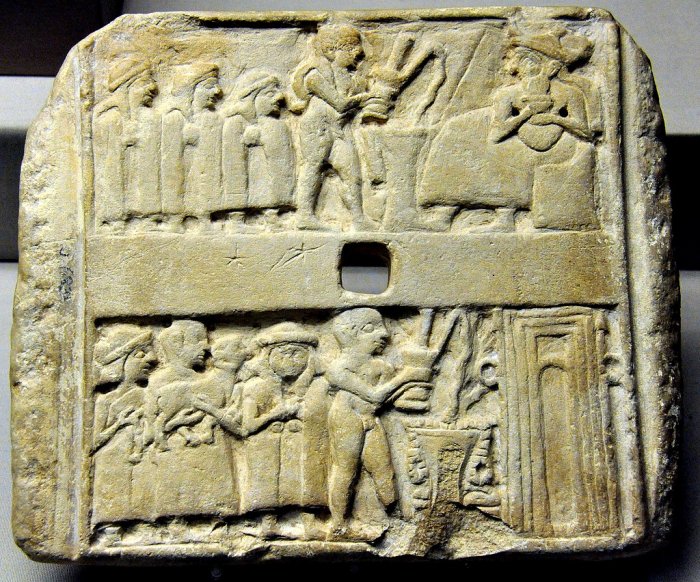 Wall plaque from Ur, 2500 BCE; the British Museum. image credit: Osama Shukir Muhammed Amin FRCP(Glasg) - CC BY-SA 4.0
Wall plaque from Ur, 2500 BCE; the British Museum. image credit: Osama Shukir Muhammed Amin FRCP(Glasg) - CC BY-SA 4.0
This flourishing period in Ur's history was considered the last great Sumerian Renaissance (2100 BC-2000 BC), attested by several construction and restoration projects, the development of literature, and the famous Code of Ur-Nammu.
During this time, the famous Ziggurat of Ur was built, the most distinguishing landmark of the city. The patron deity of Ur was the moon god Nanna, who had his temple within the Ziggurat of Ur. When it flourished, Ur had a population of approximately 65,000 people. Even after the Amorite conquest, Ur was a prominent place until it was abandoned at about 500 BC.
An Italian traveler, Pietro Della Valle, was the first European to reach Ur in 1625 who recorded ancient bricks stamped with strange symbols and inscribed pieces of black marble that looked like seals.
In 1922-1934, a British archaeologist, Sir Leonard Woolley (1880 – 1960), unearthed huge areas of Ur, including the royal tombs with treasures untouched, never seen by looters since ancient times. Among many valuable artifacts, Wooley unearthed an approximately 4,500 years old artifact dubbed the Standard of Ur and the gold helmet of King Meskalamdug (Mes-Kalam-Dug), an early Sumerian king of the First Dynasty of Ur in the 26th century BC.
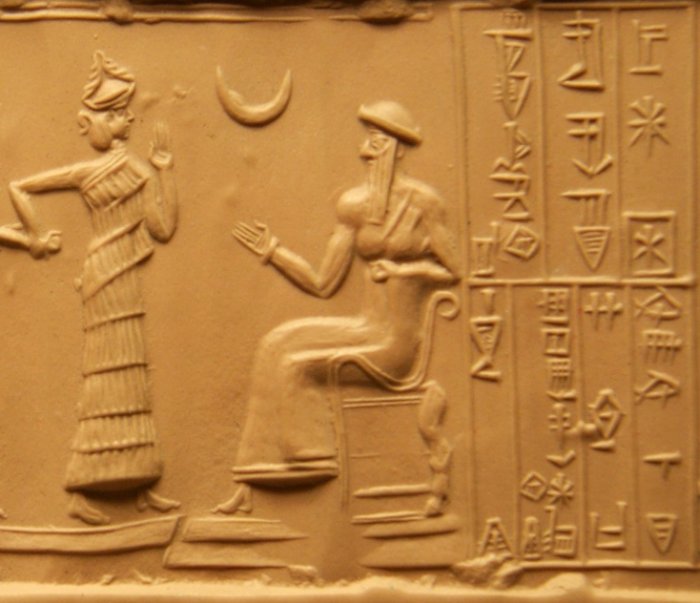 King Ur-Nammu. Image credit: Steve Harris - CC BY-SA 2.0
King Ur-Nammu. Image credit: Steve Harris - CC BY-SA 2.0
Irrigation System Of Great Importance
Mesopotamia, located between the Euphrates and the Tigris, was very fertile. Still, it required irrigation for almost eight months a year, there was no rain, and the heavy spring rains came too late to influence the harvest in April.
Drought in the summer and the flooding of the river were also problems. The construction of an irrigation system was necessary under these conditions, and strong leadership and administration could only carry out such a task.
One of the royal duties was maintaining good conditions and repairing the city's irrigation network of canals, ditches, flood dams, and irrigation furrows. Everything (plants and animals) needed water. Animals like sheep were raised, from which wool was used for clothing production.
"The farmers used the water for their fields, where they would grow date trees, wheat, lentils, onions, chickpeas, garlic, lettuce, leek, or mustard.
They would have already domesticated sheep, oxen, donkeys, and pigs, herding them for meat and other products such as wool or using them for transportation or as beasts of burden. Hunters were also prominent in Ur, hunting gazelles and fowl. Some farmers were employed to work the fields of the temple." 1
The alleged Abraham house in Ur city, Dhi Qar, southern Iraq. Credit: Aziz1005 - CC BY 4.0
Ur-Nammu was only responsible for the work of the canals near Ur. Otherwise, the citizens believed that the blessed gift of water always came from the gods, making the earth fertile. The canals also provided drinking water for washing, bathing, and cleaning. The drainage system of buildings and terraces was based on a network of clay pipes and cables.
Up To 65.000 Inhabitants Lived In Ur
Foreigners, merchants, and wealthy elites lived outside the city of Ur. At its height, about 65 thousand people lived in Ur, the richest in Sumer. Other suburbs were populated by peasants, shepherds, and other people related to agricultural activities. Public buildings, temples, baths, schools, palaces, inns, shops, workshops, and hotels and apartments for the natives were situated inside the city.
Although the city was crowded, it still had enough space for city squares, often used by people as meeting places.
Defensive System Almost Protected Ur
The town had a defensive system built by Ur-Nammu. The dried brick wall had an external façade, was eight meters above the ground, and was topped at the top by a platform with a width of 25 to 35 meters. Some elements of the walls were built of baked brick. The walls did not surround the city precisely as some buildings were erected directly on the ramparts, probably as part of the defense system.
The Euphrates River reinforced the fortifications, which flowed just outside the western walls, while an artificial canal surrounded the eastern walls or a moat. However, the defensive walls from the south needed to prepare for an enemy attack, and this part of the Ur's defensive system was indeed vulnerable.
Written by – A. Sutherland - AncientPages.com Senior Staff Writer
Updated on Oct 6, 2023
Copyright © AncientPages.com All rights reserved. This material may not be published, broadcast, rewritten or redistributed in whole or part without the express written permission of AncientPages.com
Expand for references- History, Captivating. Ur: A Captivating Guide to One of the Most Important Sumerian City-States in Ancient Mesopotamia
Kramer, Samuel Noah. "Shulgi of Ur: A Royal Hymn and a Divine Blessing." The Jewish Quarterly Review 57 (1967): 369-80.
Macleod, Kezip- Legends of Sumer
Kramer N. S. In the World of Sumer
Freeman, H. Sumerians
More From Ancient Pages
-
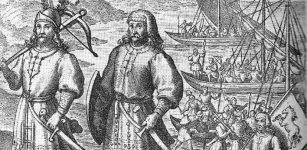 Hengist And Horsa: Legendary Anglo-Saxon Warrior Brothers And Leaders Of First Settlers In Britain
Featured Stories | May 28, 2016
Hengist And Horsa: Legendary Anglo-Saxon Warrior Brothers And Leaders Of First Settlers In Britain
Featured Stories | May 28, 2016 -
 Draugr – Vikings Feared This Ugly Living Dead With Prophetic Visions
Featured Stories | May 24, 2020
Draugr – Vikings Feared This Ugly Living Dead With Prophetic Visions
Featured Stories | May 24, 2020 -
 Ancient Roman Port Discovered Off The Syrian Coast
News | Feb 16, 2021
Ancient Roman Port Discovered Off The Syrian Coast
News | Feb 16, 2021 -
 Author’s Encounter With A Mysterious Not Of This World Entity Inside Callixtus Catacombs
Featured Stories | Apr 5, 2020
Author’s Encounter With A Mysterious Not Of This World Entity Inside Callixtus Catacombs
Featured Stories | Apr 5, 2020 -
 Hird – Viking Warriors And Professional Body Guards Prepared To Die For Their Leader
Featured Stories | Mar 22, 2018
Hird – Viking Warriors And Professional Body Guards Prepared To Die For Their Leader
Featured Stories | Mar 22, 2018 -
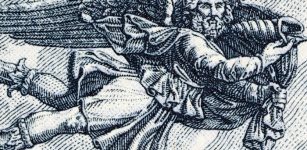 Boreas – Mighty North Wind God In Greek Mythology
Featured Stories | Mar 26, 2023
Boreas – Mighty North Wind God In Greek Mythology
Featured Stories | Mar 26, 2023 -
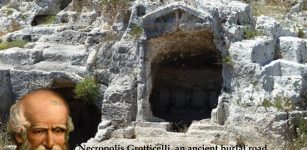 Archimedes From Syracuse – Master Of Science Whose Legacy Still Remains Powerful
Featured Stories | Sep 20, 2017
Archimedes From Syracuse – Master Of Science Whose Legacy Still Remains Powerful
Featured Stories | Sep 20, 2017 -
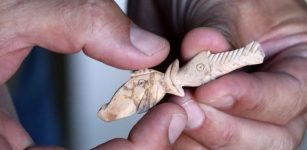 2500-Year-Old Objects Made From Goat Bones Discovered In Turkey’s City Of Aigai
Archaeology | Sep 17, 2020
2500-Year-Old Objects Made From Goat Bones Discovered In Turkey’s City Of Aigai
Archaeology | Sep 17, 2020 -
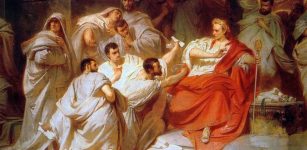 On This Day In History: Julius Caesar Assassinated – On Mar 15, 44 BC
News | Mar 15, 2017
On This Day In History: Julius Caesar Assassinated – On Mar 15, 44 BC
News | Mar 15, 2017 -
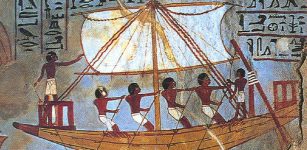 Mysterious Sherbrooke Stones – Did Africans Visit North America 2,500 Years Ago?
Artifacts | Nov 23, 2017
Mysterious Sherbrooke Stones – Did Africans Visit North America 2,500 Years Ago?
Artifacts | Nov 23, 2017 -
 Mysterious Footprints In Tanzania Made By Early Humans Not Bears
Archaeology | Dec 1, 2021
Mysterious Footprints In Tanzania Made By Early Humans Not Bears
Archaeology | Dec 1, 2021 -
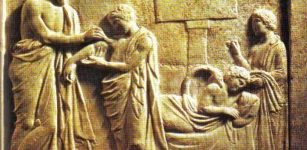 Why Was It Necessary For Great Physician Hippocrates To Eat Earwax?
Ancient History Facts | Aug 14, 2017
Why Was It Necessary For Great Physician Hippocrates To Eat Earwax?
Ancient History Facts | Aug 14, 2017 -
 Mystery Of The Horrible ‘Thing’ Found In A Dominican Monastery
Featured Stories | Sep 4, 2023
Mystery Of The Horrible ‘Thing’ Found In A Dominican Monastery
Featured Stories | Sep 4, 2023 -
 The Untold Story Of Mexico’s Ancient Giant Indians – Cunning Plan And The Evil Nation – Part 2
Featured Stories | Sep 23, 2019
The Untold Story Of Mexico’s Ancient Giant Indians – Cunning Plan And The Evil Nation – Part 2
Featured Stories | Sep 23, 2019 -
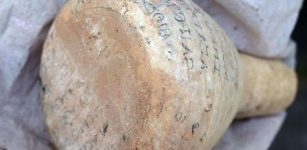 Inscription Found In Ancient Thracian Tomb in Bulgaria’s Tatarevo Is A Verse from Solon’s ‘Prayer to the Muses’
News | Sep 29, 2015
Inscription Found In Ancient Thracian Tomb in Bulgaria’s Tatarevo Is A Verse from Solon’s ‘Prayer to the Muses’
News | Sep 29, 2015 -
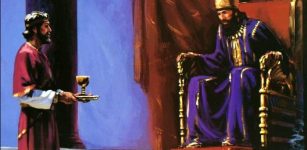 Cupbearer Was Privy To Conversations And Political Secrets Hidden Behind Closed Doors
Featured Stories | Oct 5, 2020
Cupbearer Was Privy To Conversations And Political Secrets Hidden Behind Closed Doors
Featured Stories | Oct 5, 2020 -
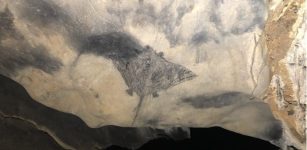 New Dating Of Intriguing Cave Art Reveals History Of Puerto Rican People
Archaeology | Oct 19, 2023
New Dating Of Intriguing Cave Art Reveals History Of Puerto Rican People
Archaeology | Oct 19, 2023 -
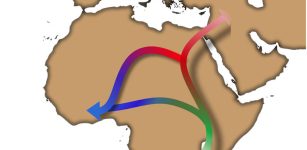 Artificial Intelligence Reveals The Out Of Africa Expansion Is More Complex Than Previously Thought
Archaeology | Oct 18, 2021
Artificial Intelligence Reveals The Out Of Africa Expansion Is More Complex Than Previously Thought
Archaeology | Oct 18, 2021 -
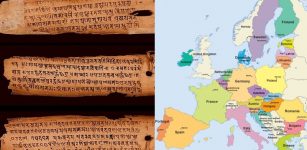 How Strong Is The Link Between Sanskrit And European Languages?
Linguistic Discoveries | Aug 5, 2020
How Strong Is The Link Between Sanskrit And European Languages?
Linguistic Discoveries | Aug 5, 2020 -
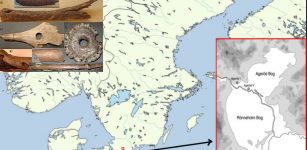 Accelerated Bone Deterioration At Mesolithic Peat Bog In Ageröd, Sweden
Archaeology | Aug 4, 2020
Accelerated Bone Deterioration At Mesolithic Peat Bog In Ageröd, Sweden
Archaeology | Aug 4, 2020

